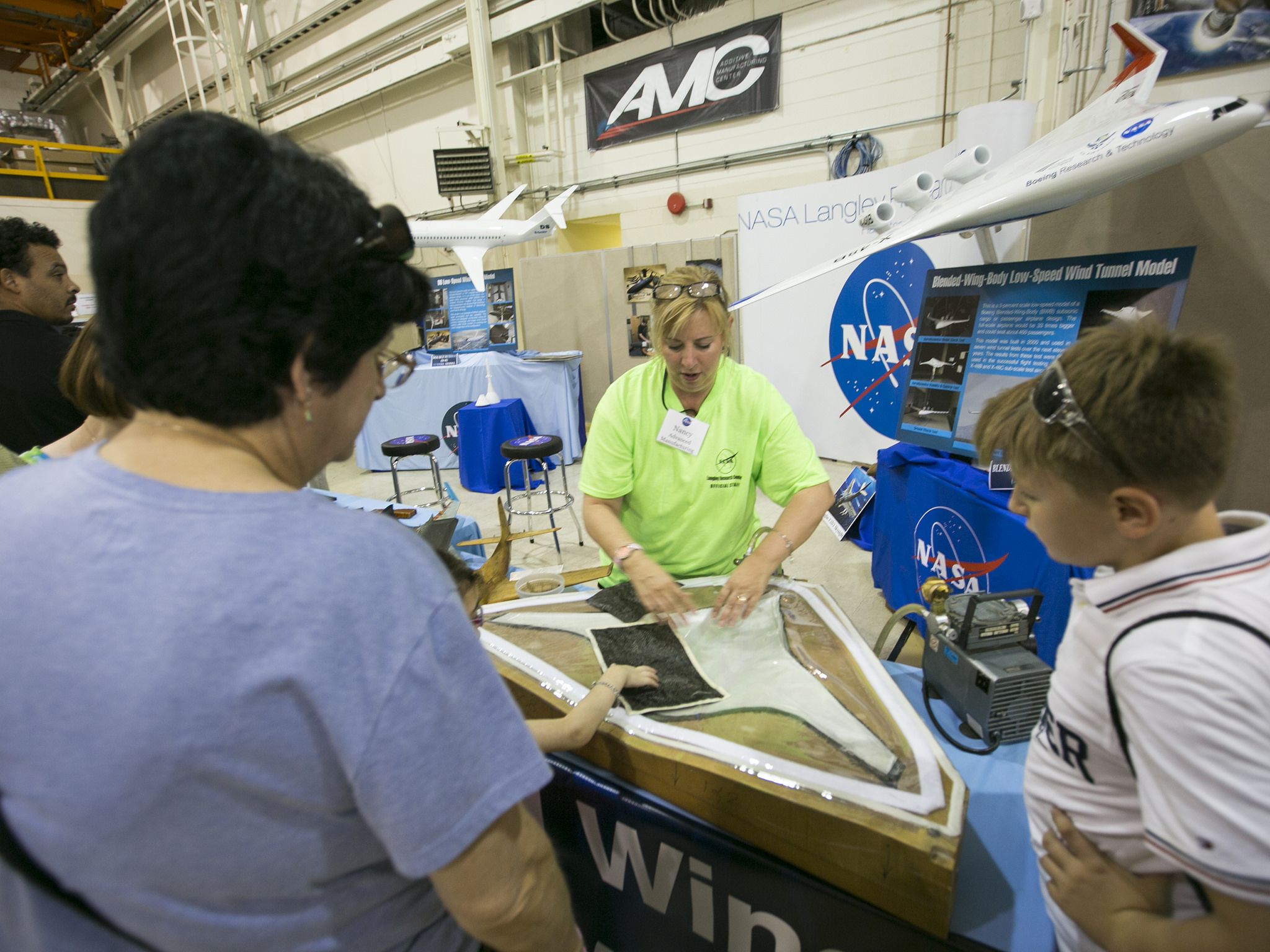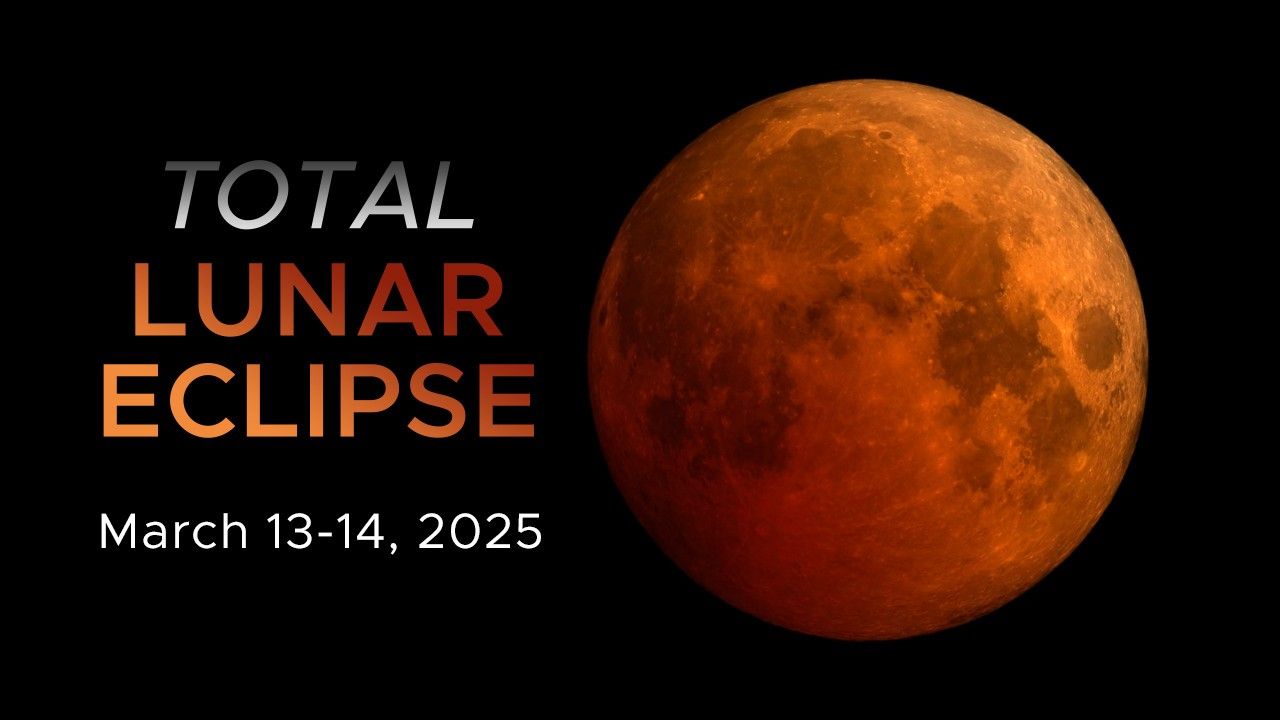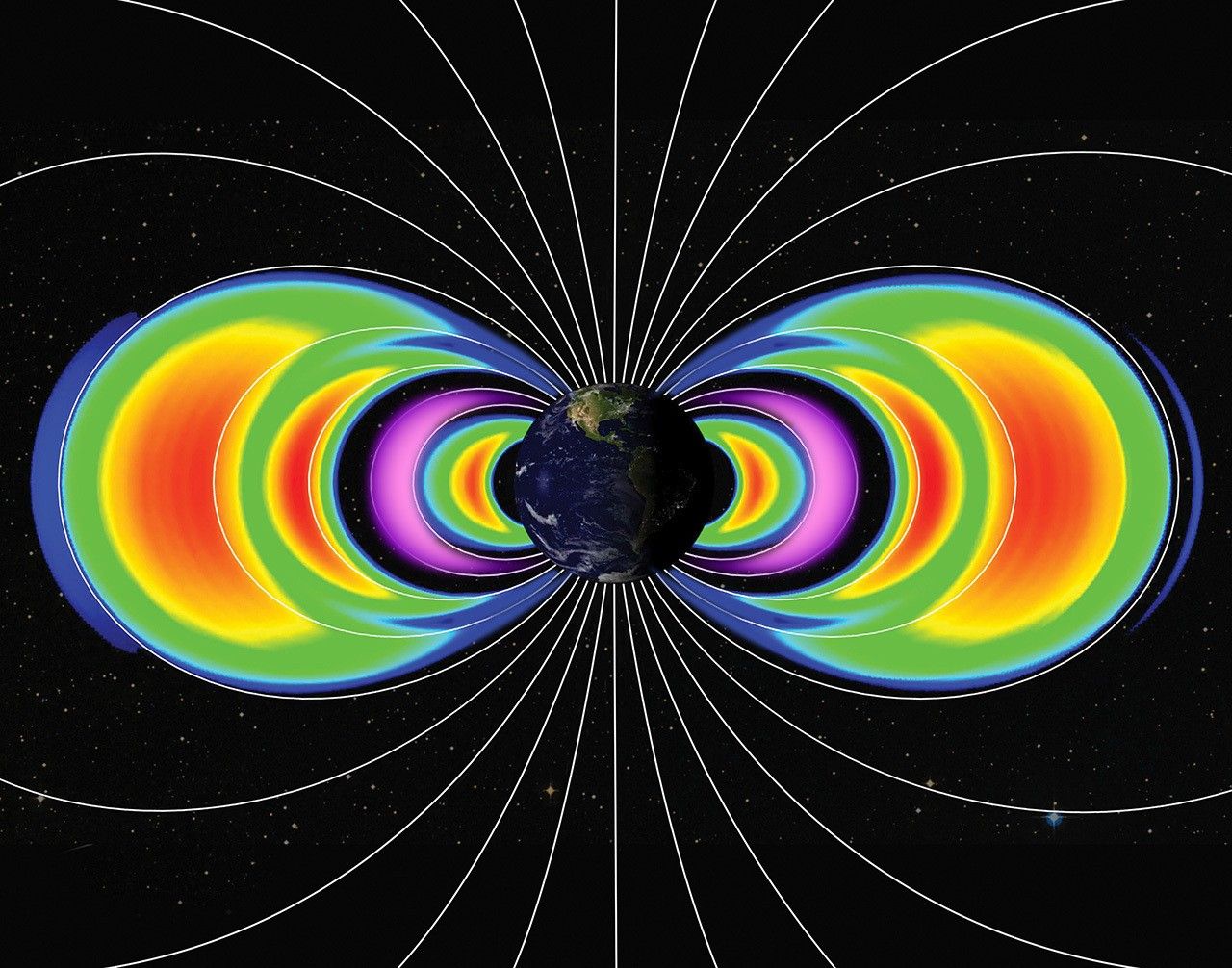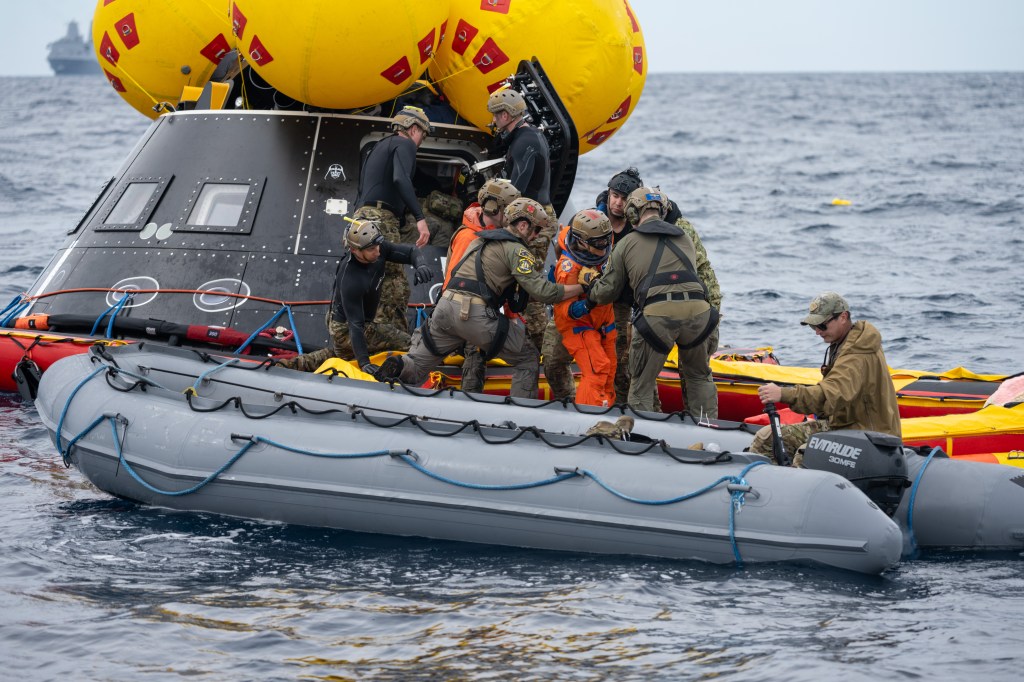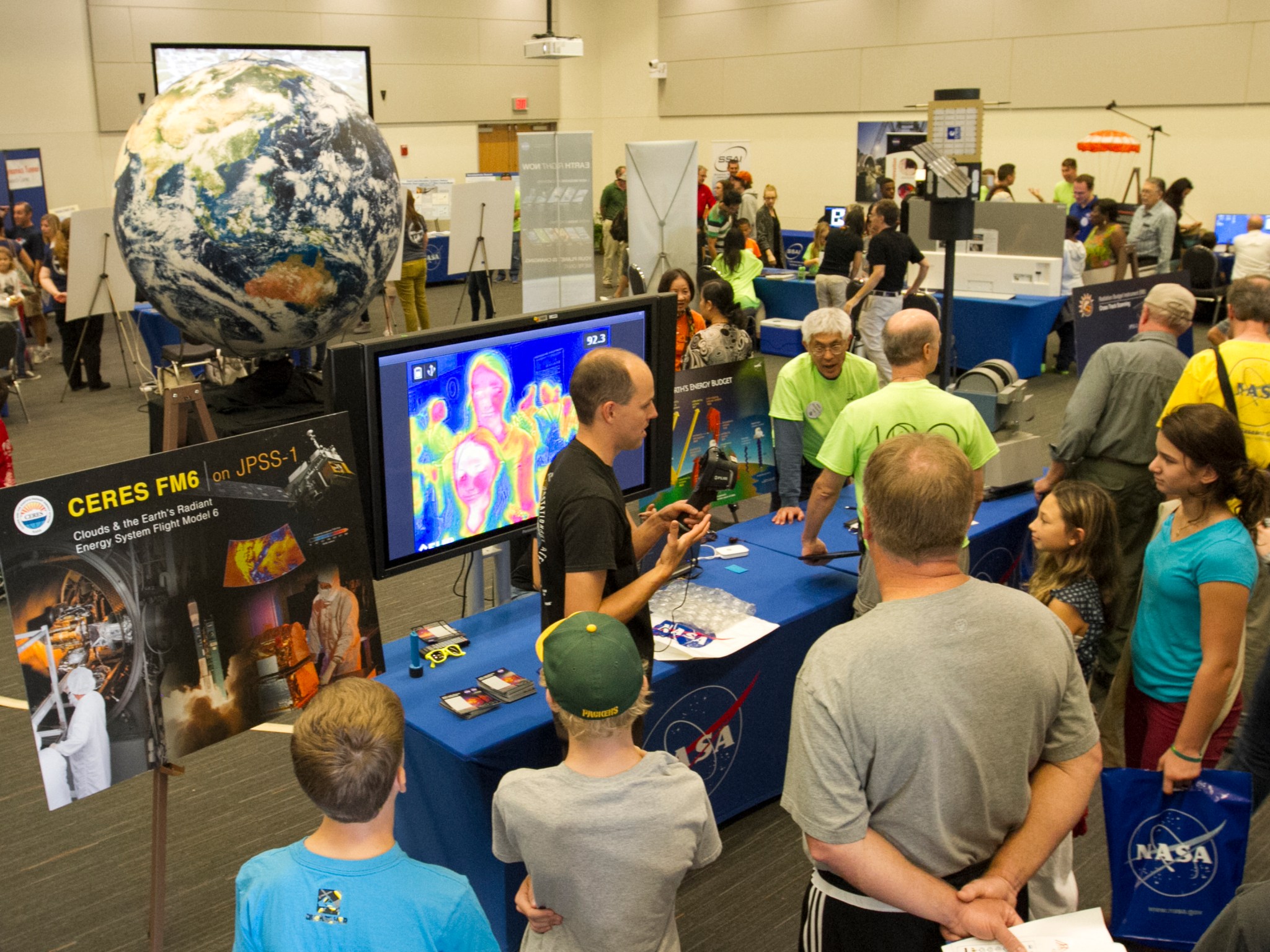For those fascinated by space exploration, aeronautics and Earth science, spending the day exploring the labs and facilities of NASA’s oldest field center felt almost like winning a golden ticket.
On Saturday, Oct. 21, visitors young and old flocked to NASA’s Langley Research Center for its Centennial Open House. An estimated crowd of 20,000 strolled the grounds and looked inside wind tunnels, clean rooms and workshops. They saw where landmark advances have taken place over the last 100 years and where current research is helping to shape the future.
Visitors said they were thrilled.
Just after 9 a.m., Chicago residents Steve and Bethany Cordero tramped through the center’s gates with daughters Amicah, 8, and Luciana, 5. “They’re pumped,” the girls’ mother said. “They’ve had their astronaut clothes laid out for weeks. They love everything space — love it kind of obsessively.”
Amicah was sporting a “Future Rocket Scientist,” T-shirt and Luciana was wearing one that proclaimed “Future Astronaut.”
“She’s going to design the rocket and I’m going to fly it,” said Luciana as she literally jumped for joy.
Older visitors were less demonstrative, but still enthusiastic.
“I’m a gigantic NASA fan,” said Sergio Maria-Fagundez, a math teacher at nearby Thomas Nelson Community College, also in Hampton, Virginia. Taking a break for lunch near the Century Tent, he was plotting out the rest of his afternoon. “I was super excited this morning,” he said. “Last night, I couldn’t get any sleep. I was like a small child at Christmas.”
STEM central
The open house kicked off with a ceremony that featured music from the Grafton High School Marching Band and words from astronaut Kay Hire, NASA Wallops Flight Facility Director William Wrobel, U.S. Rep. Scott Taylor and U.S. Rep. Bobby Scott, Hampton Vice Mayor Linda Curtis, as well as NASA Langley Director Dave Bowles.
Throughout the day, short lectures were held at the center’s Integrated Engineering Services Building to give visitors a taste of Langley’s rich history, current research and predictions of where engineering and technology will take us in decades ahead. NASA Langley’s Earth science researchers explained projects including CERES FM6, an instrument that will soon be launched into orbit to measure the solar energy reflected by Earth, the heat the planet emits and the role of clouds in that process.
Certainly, education was at the heart of Saturday’s event. Researchers at the center staffed 15 tour stops spread across Langley’s sprawling campus. Visitors hopped on school busses that ferried them from stop to stop. The list of attractions included Langley’s historic aircraft hangar; its towering Landing and Impact Research Facility or gantry; acoustics labs; and wind tunnels including the National Transonic Facility, the 14-by 22-Foot Subsonic Tunnel, the Unitary Plan Wind Tunnel and the 31-inch Mach 10 Tunnel.
At some stops, including the one for Langley’s Autonomy Incubator, lines stretched down the sidewalk.
Autonomy Incubator leader Danette Allen said she was happy to see so many people eager to learn about NASA Langley’s work with intelligent flight systems. “The line has been non-stop since we opened,” Allen said. “And we’re getting lots of great questions.”
Inside, a team of presenters gave visitors a look at how autonomous air vehicles will one day help with tasks like the search and rescue. Armed with powerful sensors, drones will one day be able to choose their own routes, avoid obstacles and save lives. In the lab at Langley, a researcher showed how a quadcopter equipped with lidar sensors could detect and avoid an unexpected obstacle.
“It was interesting,” said Kenny Barrett from Smithfield, Virginia, who had waited about 35 minutes to see the UAV (unmanned aerial vehicle) demo. He and friend Jennifer Ward were eager to learn about NASA’s advances in robotics. “That’s the reason we came today, to see what NASA is doing to shape the future,” he said. “So, yeah, we got a glimpse of that.”
Inspiration and education
A nearby Kids Zone, set up in Langley’s gymnasium, buzzed with activity throughout the day.
Crowds of young people made bracelets of beads that change color when exposed to ultraviolet light — giving kids a fun lesson in the invisible power of radiation. Other children used markers to create their own color-coded depictions of the solar system. And across the way, 4-year-old Sean Krukowski from Chesapeake beamed as a remote controlled, small-scale Mars rover crawled over his back — teaching a lesson about how vehicles need exploring distant planets must be able to navigate uneven terrain.
“That smile is priceless,” gushed mother Holly Krukowski.
How did it feel having the Roll Over Rover traverse your midsection? “It tickled!” Sean said. But that wasn’t his favorite part of the Kids Zone. “I liked building the Legos,” he said with the same bright smile.
The newly opened Katherine G. Johnson Computational Research Facility was a popular spot for open house visitors to pause and reflect — plus take a selfie or two. The Richardson family of Suffolk, Virginia, were among those snapping pictures on Saturday.
Having heard about the event through a Langley employee at their church, the Richardsons couldn’t pass up the opportunity to take in the sights and learn a bit of history.
The contributions of Johnson, Dorothy Vaughan and Mary Jackson were illuminated in Margot Lee Shetterly’s book “Hidden Figures” and the major motion picture of the same name. Lynnette Richardson said she has read the book and seen the movie numerous times and was excited to visit the locations where events in “Hidden Figures” took place.
“It just shows that in this day and age, we are without excuse when you consider a lot of the things they had to overcome,” Rick Richardson said. “They did it out of a sense of duty to this country.”
Elsewhere, Jason Armstrong of Virginia Beach, who works at Newport News/Williamsburg International Airport, absorbed some first-hand knowledge of the aeronautics history made at Langley.
He was inspired by the collection of aircraft inside Langley’s hangar. “I’m an airplane guy,” he said. “This is like a toy store. This is fun.” Armed with a notepad and camera, Armstrong collected memories, deepened his knowledge and maybe made a professional connection or two.
Big crowds, positive reactions
NASA Langley leaders said they were elated to see such a strong, positive reaction from the general public.
“A truly fantastic day,” director Bowles said. “I tell people all the time that I have the coolest job on the planet. The open house visitors now know why I say that.”
Open house co-chairman Ann Marie Trotta noted that visitors came to Langley from as far away as California, Michigan and Florida. “The open house offered us a unique and meaningful way to engage with the public and share the breadth of all that we do here at Langley through our unique facilities, technical experts and inspiring missions,” she said.
Based on numbers alone, the open house looked like a success.
“I’ve never seen so many people,” said veteran NASA Langley researcher Frank Quinto, who runs Langley’s 14-by 22-Foot wind tunnel. “It’s been wonderful.”
Quinto was happy to know that so many people were getting an intimate look at NASA’s work. For example, thousands of visitors cruised through the 14-by 22-Foot tunnel’s test section and saw the QueSST model currently being tested there. QueSST stands for Quiet Supersonic Technology and the experimental aircraft design represents a step toward restoring supersonic passenger flight over land.
“People are getting to see what their tax money is paying for,” Quinto said. “We like to tell people that NASA is with you when you fly. Today, they got to see exactly what that means.”
Visit this image gallery to see more photos from the open house.
